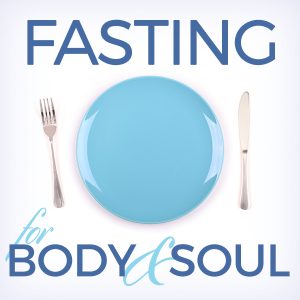A Hidden Connection Between Fasting and Feasting in the Gospels
This is the fourteenth piece in a series on how to develop a fasting lifestyle. Read the entire series here.
There’s a surprise connection between fasting and feasting in the New Testament. It’s hiding in plain sight. But you’ll only notice it if you read the gospels together, rather than as individual books.
Recall that Matthew, Mark, and Luke (the “synoptic” gospels) tell us that before He started His public ministry, Jesus’ fasted in the desert for forty days and forty nights. John, in contrast, doesn’t mention this event.
Like the synoptics, John does report that Jesus was baptized by John the Baptist. And that Jesus started gathering disciples in Galilee. But instead of mentioning Jesus’ pre-ministry fast in the desert, John writes about a pre-ministry feast.
Wedding Feast at Cana
“On the third day there was a marriage at Cana in Galilee,” John writes, “and the mother of Jesus was there; Jesus also was invited to the marriage, with his disciples.” It’s clear that Jesus has still not started his public ministry. Why? Because when the hosts run out of wine, Mary asks Jesus for help. And he replies, oddly, “O woman, what have you to do with me? My hour has not yet come.”
In other words, Mary knows something that the others do not, namely, that Jesus has the power to fix the problem with the wine. But Jesus has not yet gone public, and so He reminds her of that. Rather than change the subject, though, she defers to Jesus, no doubt still with the hope that He will do something. “Do whatever he tells you,” she advises the servants. (John 2: 1 – 5 RSV)
You know the rest of the story. Jesus does not go into hiding or shrug His shoulders. He turns six stone jars full of water into wine. And when the “steward of the feast” tastes the wine, he’s surprised, and asks the bridegroom why he did not serve this good wine first. Who serves the best wine last?!
John then tells us, “This, the first of his signs, Jesus did at Cana in Galilee, and manifested his glory; and his disciples believed in him.” (John 2:11 RSV)
Sacramental Symbols
Why, just before Jesus’ public ministry, do the synoptics mention Jesus’ long fast, whereas John mentions Jesus’ miracle at a wedding feast?
Biblical scholars know that John’s gospel is more packed with symbols than the other three gospels. That doesn’t mean John made things up. He’s also interested in history, and tells readers at the end of his gospel that he’s only scratched the surface. Think of the fourth gospel as John’s highlights of Jesus’ ministry with an eye to their symbolic meaning.
For instance, careful readers will notice that Jesus at Cana turned water into wine. Jesus could have just multiplied the left-over drops of wine — as He did later with bread and fish. Instead, He had the water poured into ritual purification jars, and then he turned it to wine. This is just one of many places where John’s gospel contains symbols of baptism and the Eucharist. Once you realize this, the symbols are almost glaring. And given John’s interest in symbolism, it’s no wonder that the miracle at the wedding in Cana stood out.
Fasting and feasting: We can’t really have one without the other. If we’re just eating, or rather overeating, we’re missing out.
Here and elsewhere, John seems to take for granted much of what the other gospels recount, and so fills in details or focuses on other events. (He’s not just avoiding the temptation story, as Bart Ehrman argues.) Matthew, Mark, and Luke tell us about Jesus’s fast in the desert before the start of his ministry. John, perhaps assuming his readers will already know about Jesus’ fast, recounts Jesus’ first miracle. And what is that miracle? Rescuing a marriage feast!
Don’t tell me that’s a coincidence. John is so careful about such matters. That’s why I suspect he meant to connect Jesus’s miracle at this wedding feast with Jesus’ fast in the desert. That is, John probably intended careful readers to see the connection. And even if the human author of this gospel didn’t intend this, then surely the divine Author did. The books of the Bible aren’t isolated words of God. The Bible as a whole is the Word of God.
Fasting and Feasting: Two Sides of the Same Coin
So what is the connection? There are many. But one is surely that fasting and feasting are two sides of the same coin. We can’t really have one without the other. If we look forward to a future wedding feast, then we should expect to fast as we prepare for it. If we’re just eating, or rather overeating, then we’re missing out. Who knows what may await us, the Church and the world, if millions of Christians would return to the right balance of eating, fasting, and feasting?
Think and pray about this as we await the great feast of Easter. If you’re fasting right now, it should be easy to remember!
Jay Richards is the Executive Editor of The Stream; and an Assistant Research Professor in the Busch School of Business and Economics at The Catholic University of America. Follow him on Twitter.








